Masterpiece Story: Dynamism of a Dog on a Leash by Giacomo Balla
Giacomo Balla’s Dynamism of a Dog on a Leash is a masterpiece of pet images, Futurism, and early 20th-century Italian...
James W Singer, 23 February 2025
Claude Monet’s Impression, Sunrise is a masterpiece of Impressionism that captures the elusiveness and the impermanence of an autumn waterscape.
Claude Monet (1842-1926) is one of the most famous and beloved artists in our modern global society. He pioneered French Impressionism, which overthrew 19th-century practices of optical illusionism, meticulous details, and smooth shading.
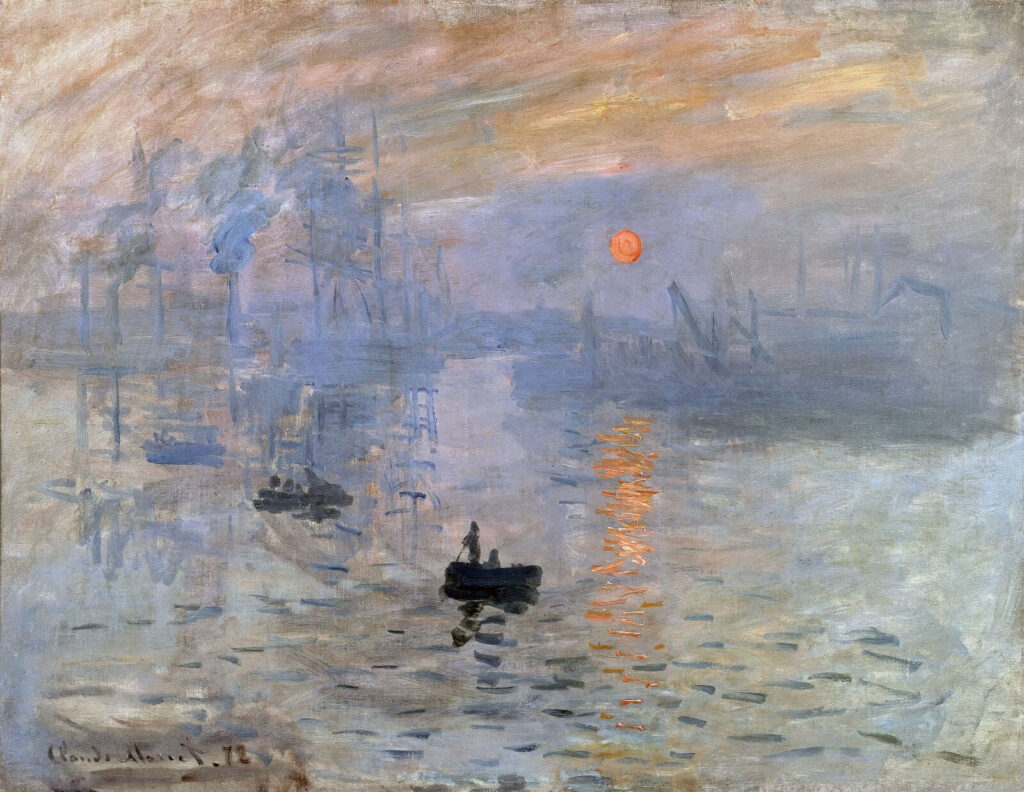
Claude Monet, Impression, Sunrise, 1872, Musée Marmottan Monet, Paris, France.
Impressionism embraced abbreviation, speed, and spontaneity to capture the elusiveness and impermanence of a moment. Claude Monet’s Impression, Sunrise converts all of these ideas into a masterpiece of the movement. It could be argued that without Impression, Sunrise, the very name would not have existed at all.
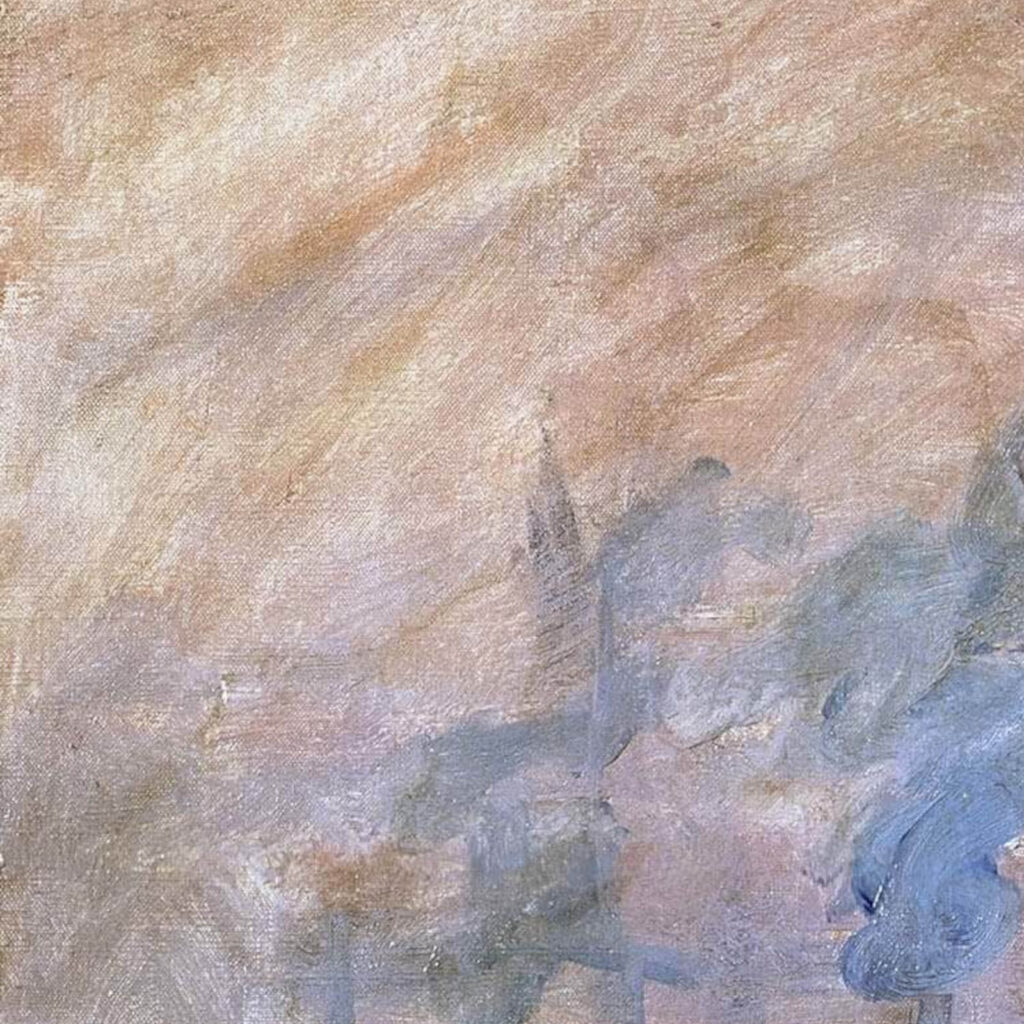
Claude Monet, Impression, Sunrise, 1872, Musée Marmottan Monet, Paris, France. Detail.
Impression, Sunrise is an oil on canvas measuring 65 cm wide and 50 cm high (18.9 in × 24.8 in). Monet painted it in a quick few hours sometime in November 1872 during his stay at Hôtel de l’Amirauté in Le Havre, Normandy, France, capturing the harbor from his southeast-facing hotel window. The left bank is the Quai au Bois, and the right bank is the Quai Courbe. The former is dotted by smoke-filled chimneys, and the latter is punctuated by construction cranes. Both quays witnessed the ever-increasing industrialization in 19th-century France. Amid these quays is a small water lock that leads to the Eure River. Monet presents the lock as the only piece of undisturbed shoreline. Perhaps there is an implied commentary of man encroaching upon nature here?
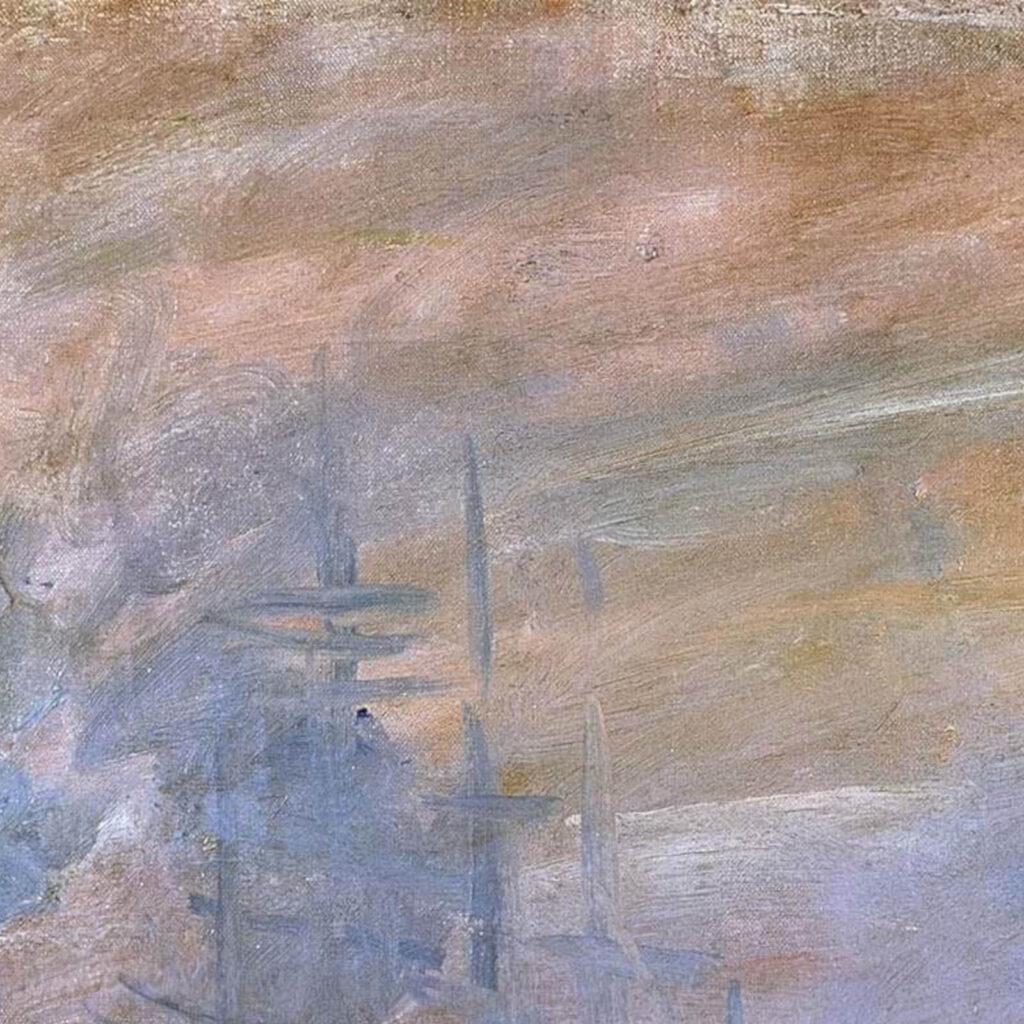
Claude Monet, Impression, Sunrise, 1872, Musée Marmottan Monet, Paris, France. Detail.
The industrial elements, namely the chimneys and cranes, blend into the vaporous mist of the swirling sky. Black smoke and grey clouds converge into a bluish haze. The sun rises above these dark hues, casting a brilliant red-orange glow to the sky that reflects upon the glittering water below.
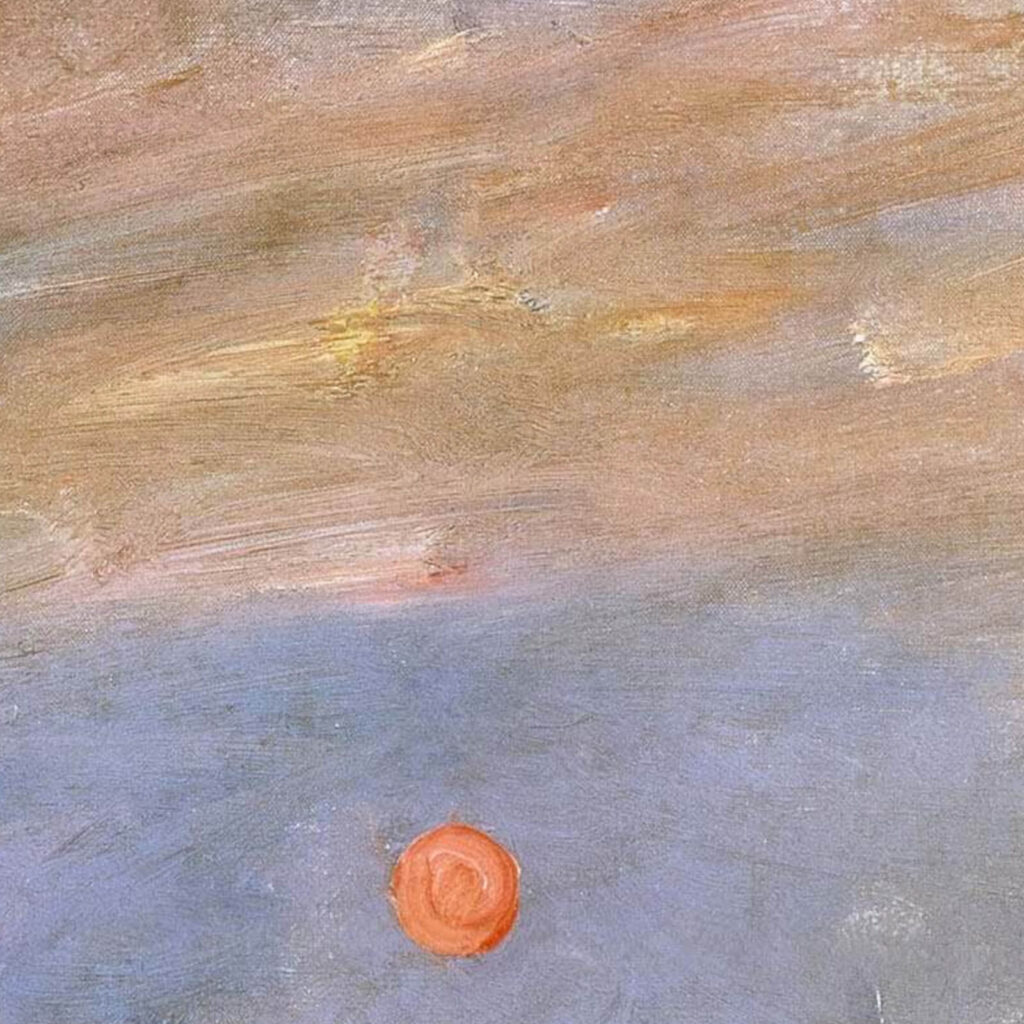
Claude Monet, Impression, Sunrise, 1872, Musée Marmottan Monet, Paris, France. Detail.
The sun is the sole source of warmth in this scene. As it hangs in a distant sky, the scarce sunlight implies a cold and windy autumn dawn.
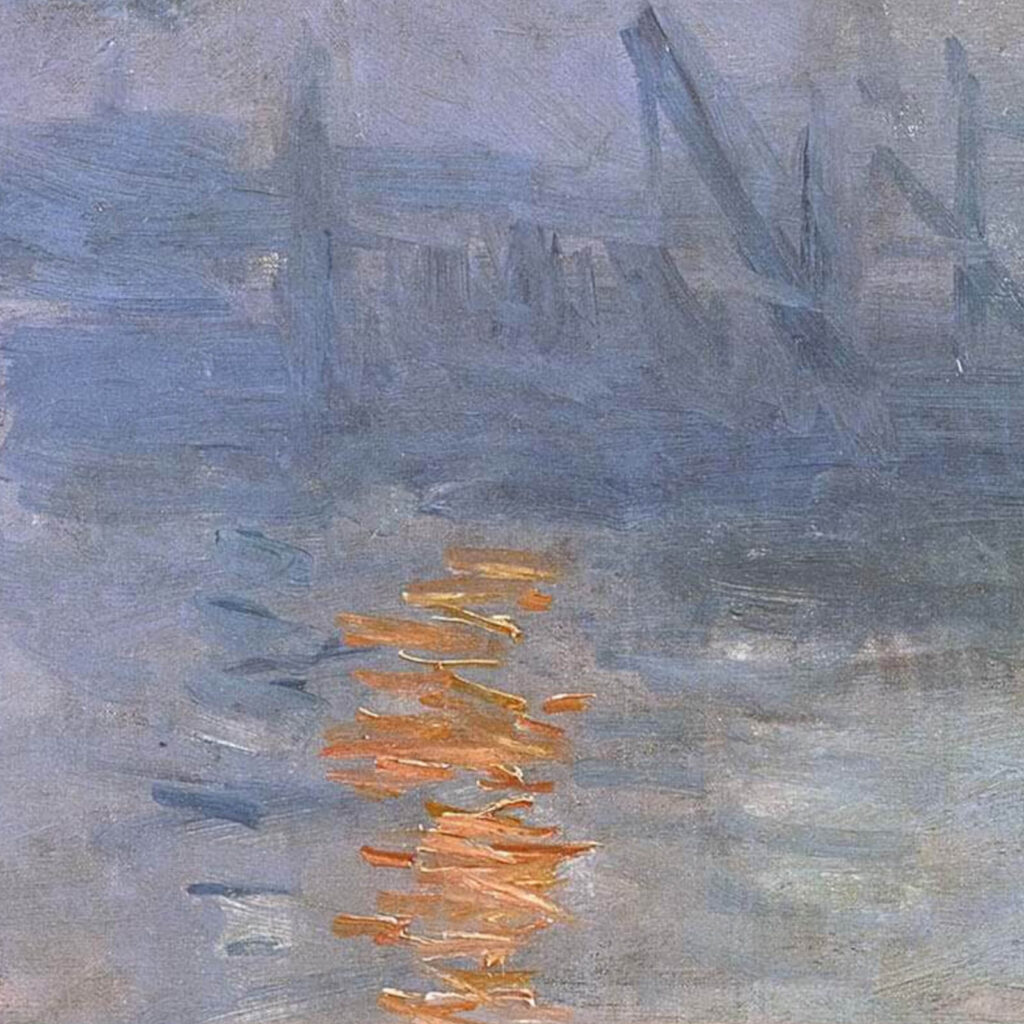
Claude Monet, Impression, Sunrise, 1872, Musée Marmottan Monet, Paris, France. Detail.
Below the horizon line and closer to the viewer are three boats in a diagonal line formation. Their distance is conveyed by a gradation of size and color: The closest boat is the darkest and largest, while the farthest boat is the lightest and smallest. These three boats are not happy pleasure boats. They are not even honest fishing boats. They are illegal, sneaky smuggler boats.
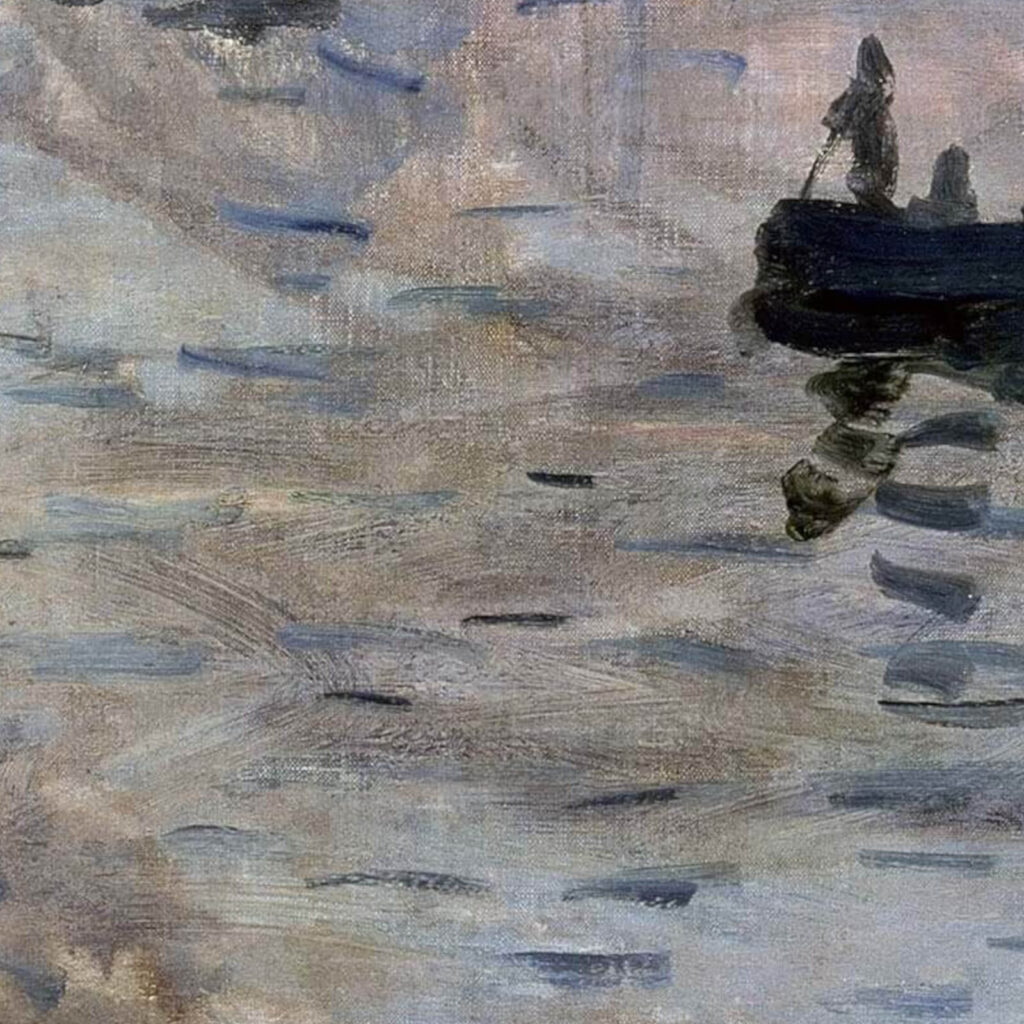
Claude Monet, Impression, Sunrise, 1872, Musée Marmottan Monet, Paris, France. Detail.
What are they smuggling through the harbor of Le Havre in the early morning hours? Perhaps salt and tobacco, since both used to be very common smuggled items. Monet documented this criminal activity in his famous waterscape.
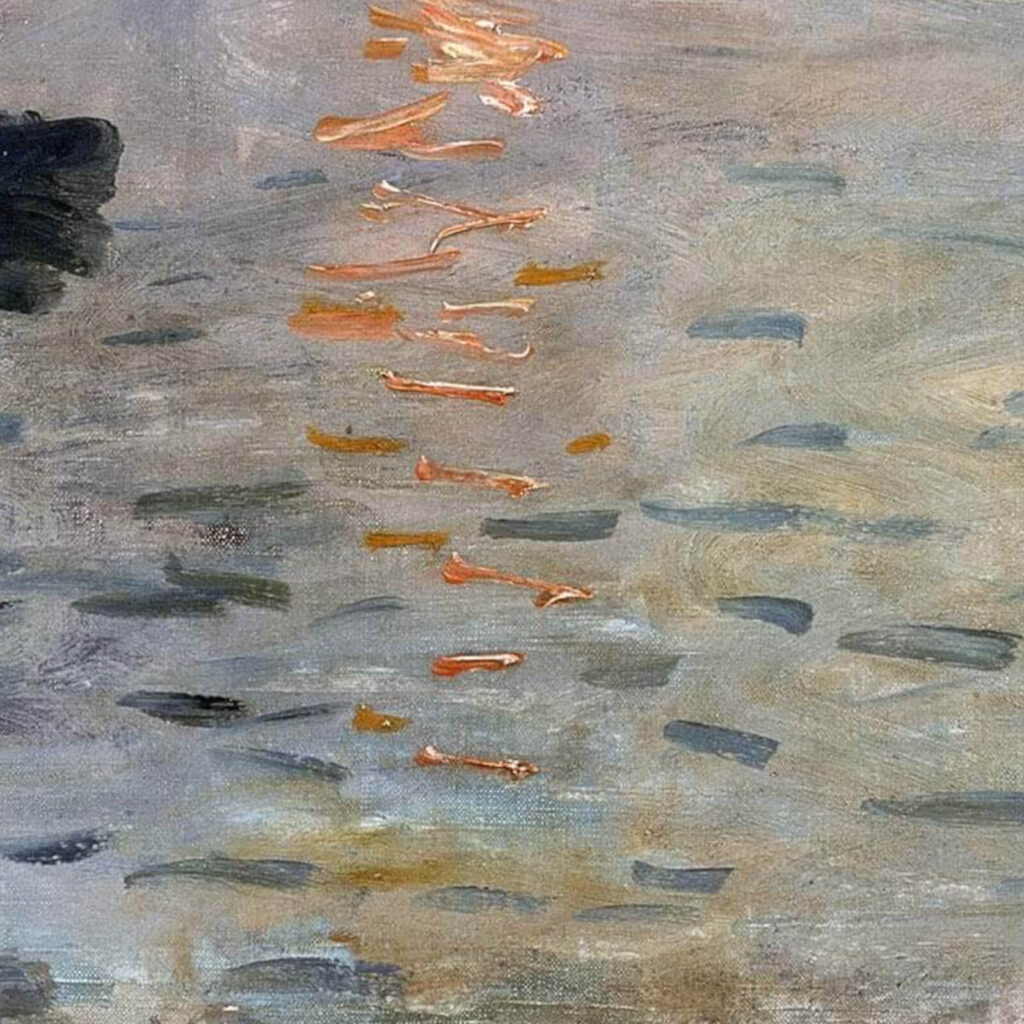
Claude Monet, Impression, Sunrise, 1872, Musée Marmottan Monet, Paris, France. Detail.
As viewed from the Hôtel de l’Amirauté, the harbor’s morning light must have meant something for Monet to put it down on canvas. Like his fellow Impressionists, Monet sought to seize a particular moment in time with its particular lighting, mood, and feelings, and the goal was to record a specific impression. Yet what was Monet’s impression? Was it a scene filled with human drama embodied by environmental pollution, industrial construction, and criminal activity? Or was it a scene filled with natural drama showcased by wispy clouds, a burning sun, and rocking water? The painting incorporated every aspect mentioned and treated them as mutually constitutive.
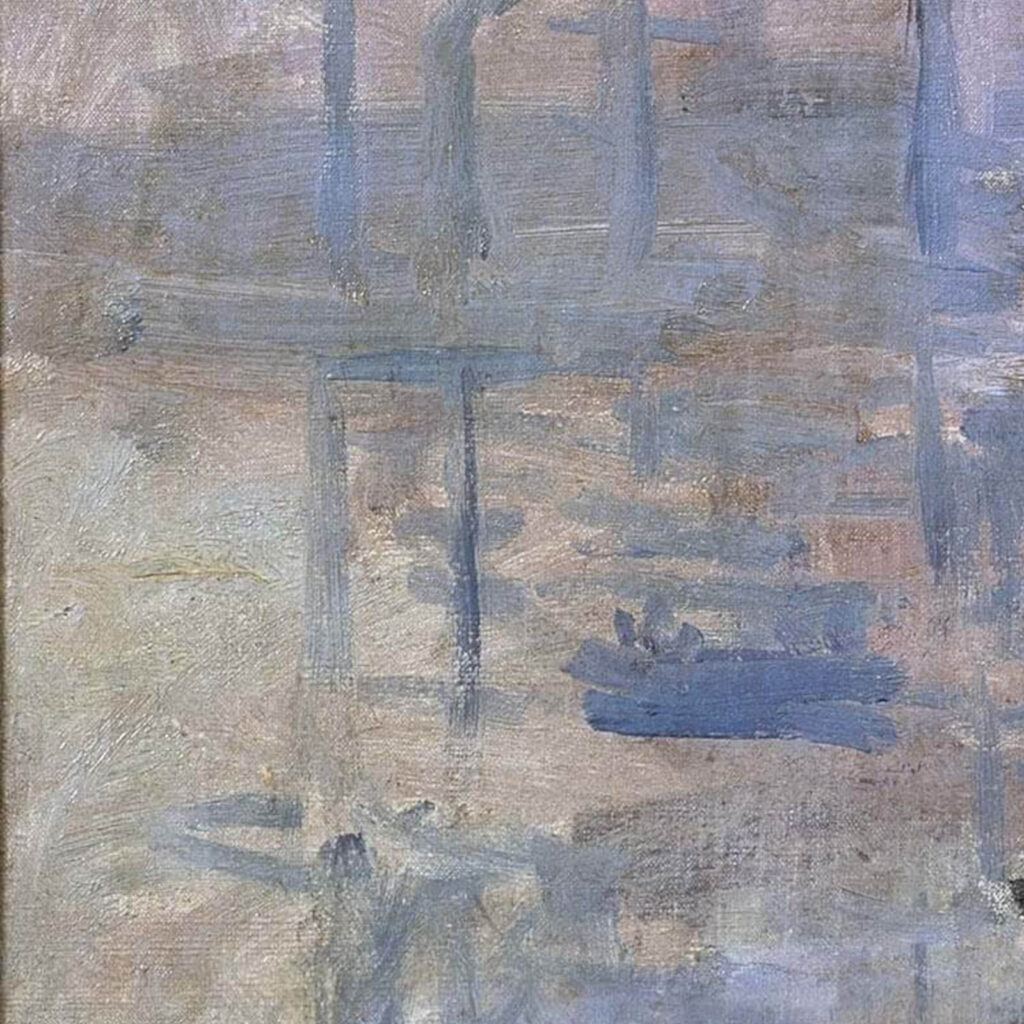
Claude Monet, Impression, Sunrise, 1872, Musée Marmottan Monet, Paris, France. Detail.
Monet definitely has the mindfulness of taking a mundane scene and turning it into a most reflective moment. He dwells upon the subject like a moment of meditation. He transforms something ordinary into a subject of wonder. Impression Sunrise feels like a privileged experience and not just some hotel snapshot.
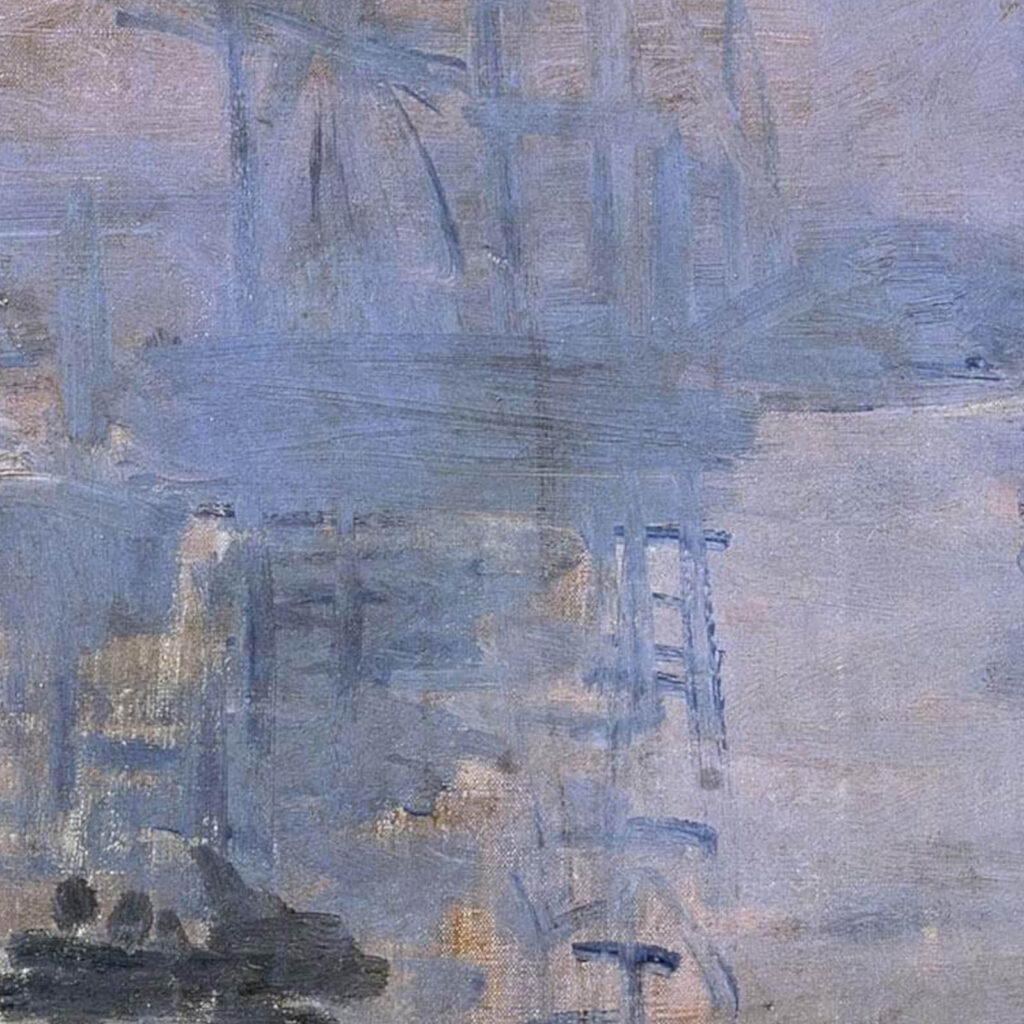
Claude Monet, Impression, Sunrise, 1872, Musée Marmottan Monet, Paris, France. Detail.
When Monet displayed Impression Sunrise in the Société Anonyme Coopérative of 1874, he titled it Impression, Soleil Levant translated as Impression Sunrise. He did not apologize for his lack of meticulous details or preliminary under-drawing. For him, it was simply a painting capturing an impression, a fleeting sensation of what he experienced. However, while his sketch-like viewpoint is readily accepted today in the early 21st century, it faced criticism in the late 19th century upon its first appearance.
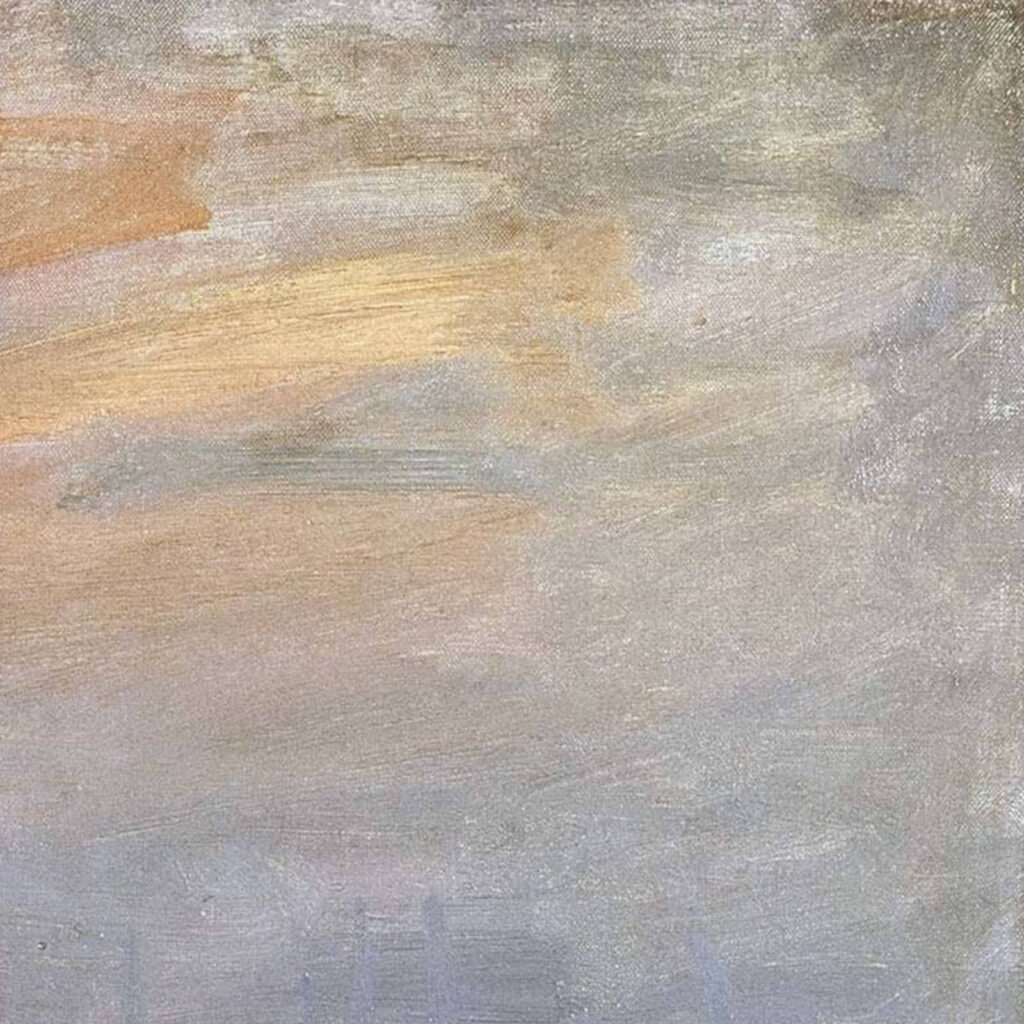
Claude Monet, Impression, Sunrise, 1872, Musée Marmottan Monet, Paris, France. Detail.
Louis Leroy, a conservative journalist and a supporter of Academic painting, attended the Société Anonyme Coopérative of 1874 to cover the exhibition for Le Charivari, a famous French satirical newspaper. Leroy did not find Monet’s painting impressive. But it did leave him a lasting impression as being sloppy, unfinished, wild, and certainly not art.
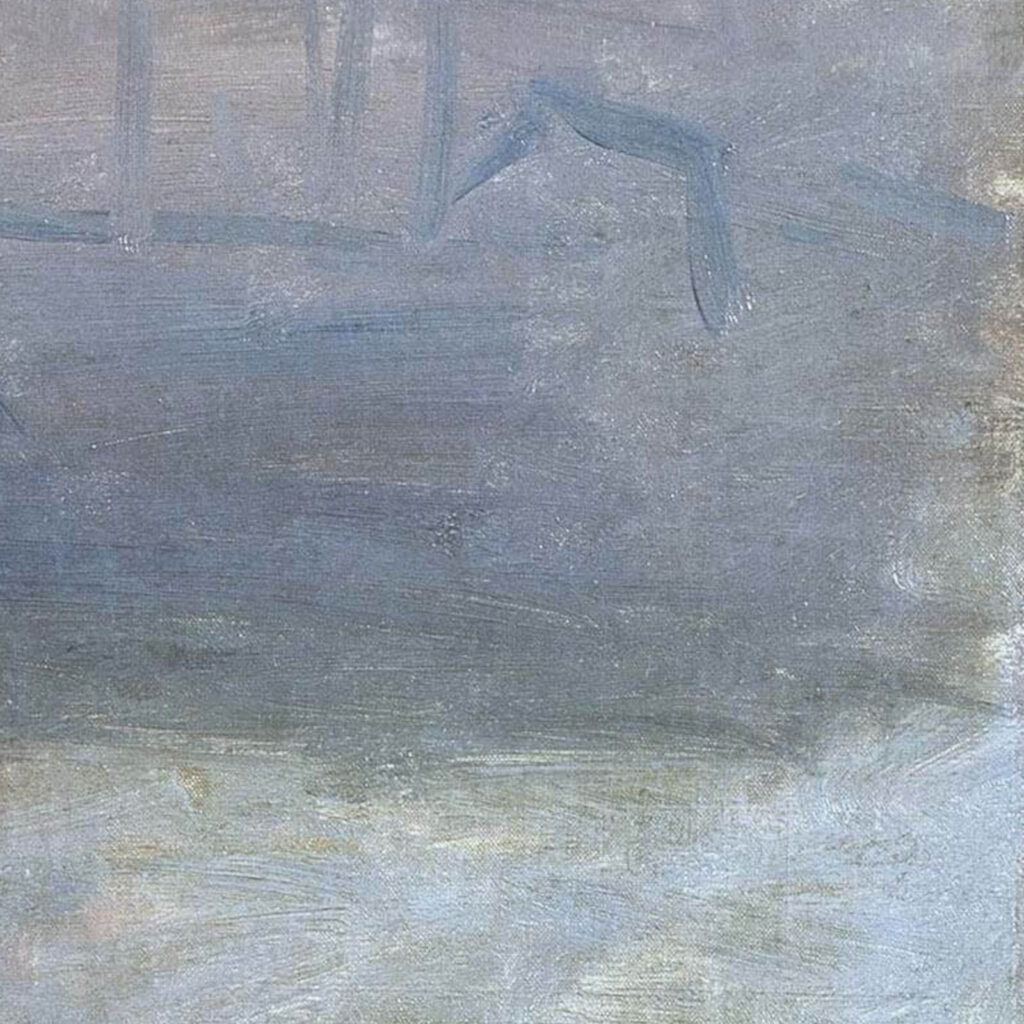
Claude Monet, Impression, Sunrise, 1872, Musée Marmottan Monet, Paris, France. Detail.
Louis Leroy later wrote a now-famous review, “Exhibition of the Impressionists,” published on April 25, 1874. Leroy stated that Impression Sunrise broke all the established rules of Academic art with its loose brushstrokes, unmixed colors, and blurry composition. Where are the details? Where is the immaculate shading? He used the word impression and coined impressionists as derogatory terms for untalented hacks. According to Leroy, Monet and his friends were not artists but simply impressionists. They cannot create art, just merely impressions of art. Now the art world would have the last laugh, Leroy.
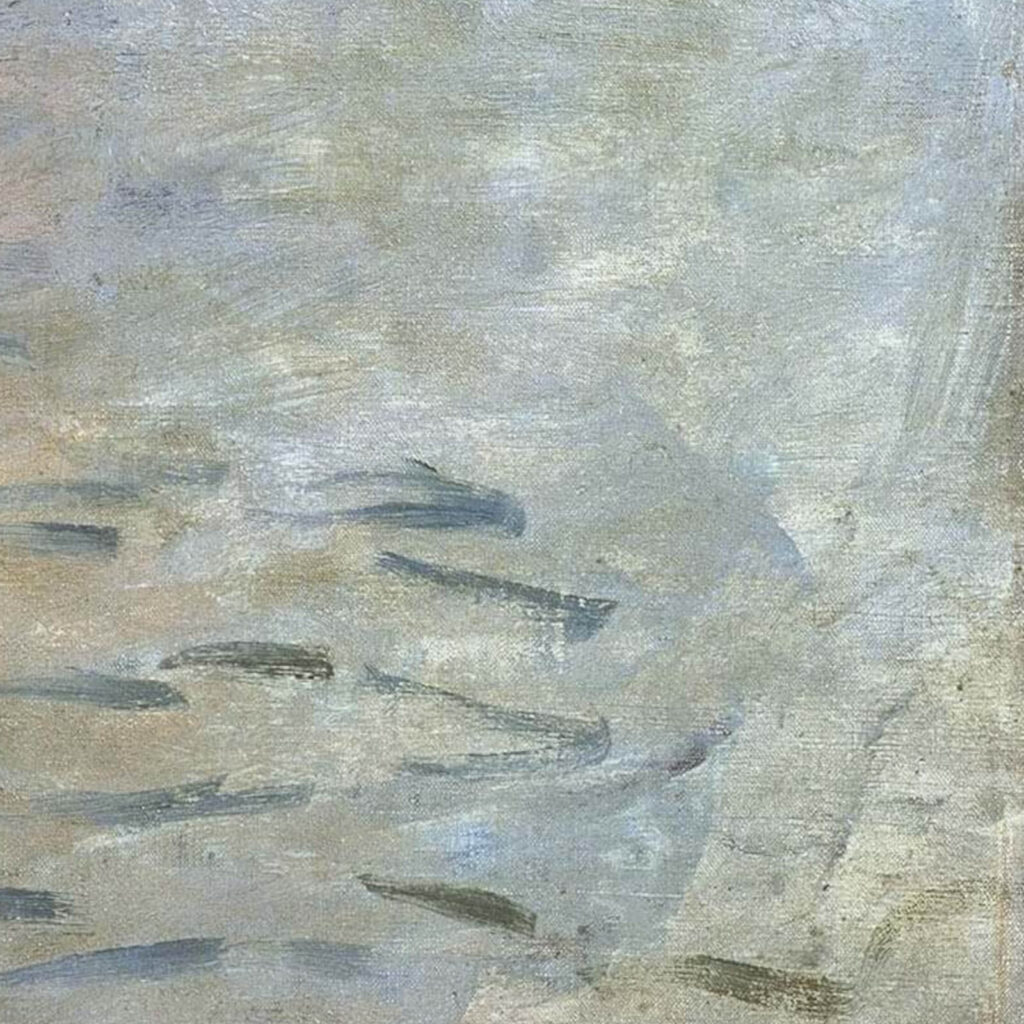
Claude Monet, Impression, Sunrise, 1872, Musée Marmottan Monet, Paris, France. Detail.
Today, Claude Monet is universally known, almost contrary to Louis Leroy. Monet’s paintings in museums around the world draw millions of visitors every year. Reproductions of his artwork fill the walls of countless homes, offices, hotels, and restaurants. Online web pages are dedicated to him. Smartphones, laptops, and desktop computers have his paintings as digital backgrounds. Claude Monet is almost everywhere with his omnipresent artistic touch. Louis Leroy is barely found in the footnotes of art history anecdotes. Leroy lost. Monet won. Culture gained.
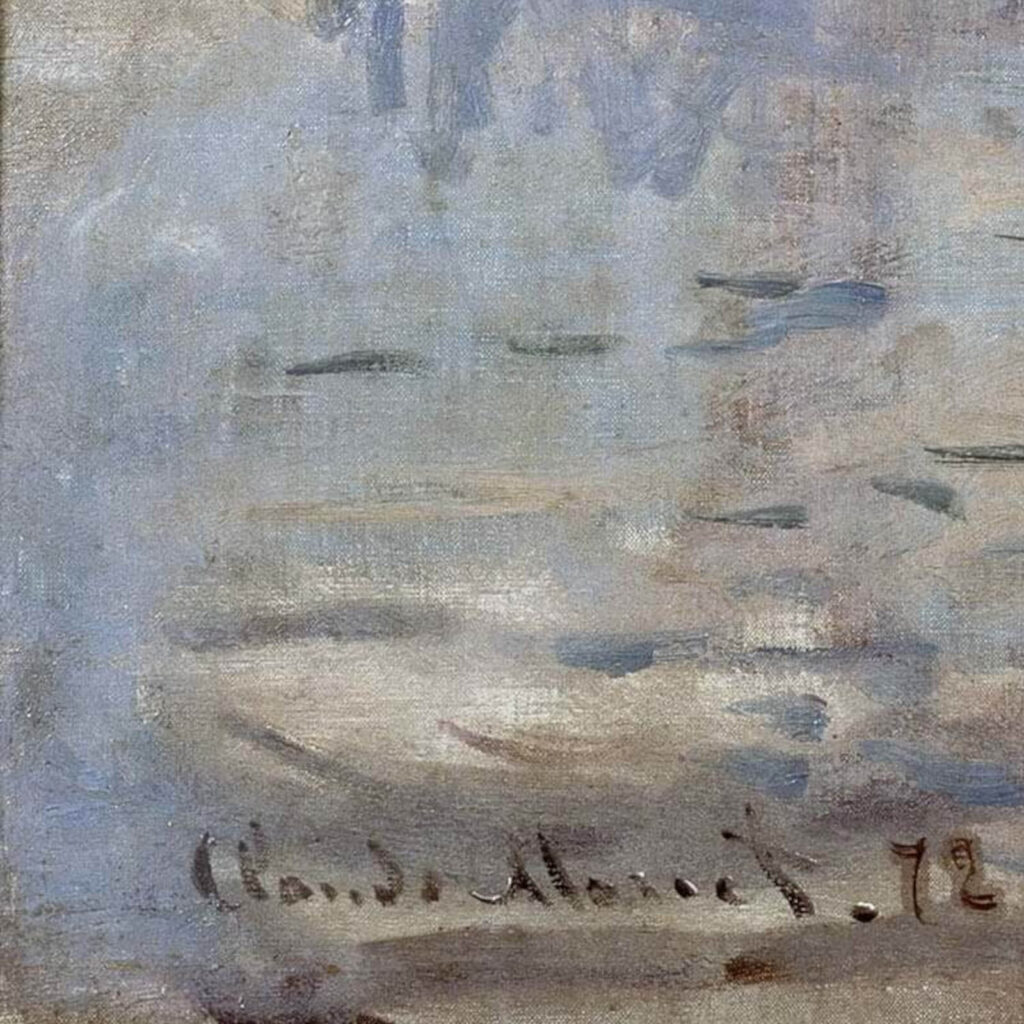
Claude Monet, Impression, Sunrise, 1872, Musée Marmottan Monet, Paris, France. Detail.
Beckett, Wendy, and Patricia Wright. Sister Wendy’s 1000 Masterpieces. London, UK: Dorling Kindersley Limited, 1999.
Charles, Victoria, Joseph Manca, Megan McShane, and Donald Wigal. 1000 Paintings of Genius. New York, NY, USA: Barnes & Noble Books, 2006.
Gardner, Helen, Fred S. Kleiner, and Christin J. Mamiya. Gardner’s Art Through the Ages. 12th ed. Belmont, CA, USA: Thomson Wadsworth, 2005.
“Impression, Soleil Levant.” Collection. Musée Marmottan Monet, Paris, France. Retrieved 1 December 2023.
“Impression, Soleil Levant.” Google Arts & Culture. Retrieved 1 December 2023.
DailyArt Magazine needs your support. Every contribution, however big or small, is very valuable for our future. Thanks to it, we will be able to sustain and grow the Magazine. Thank you for your help!